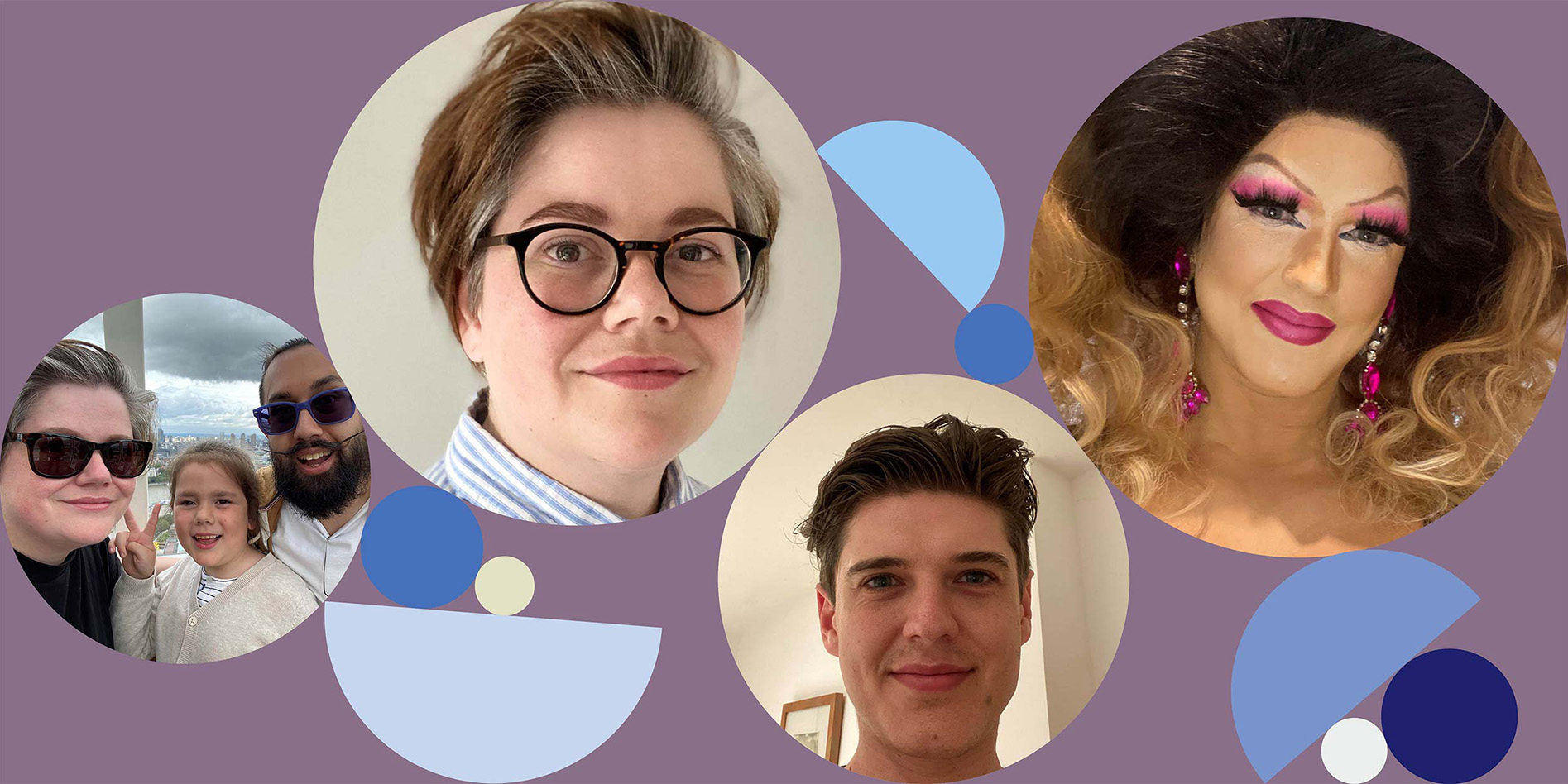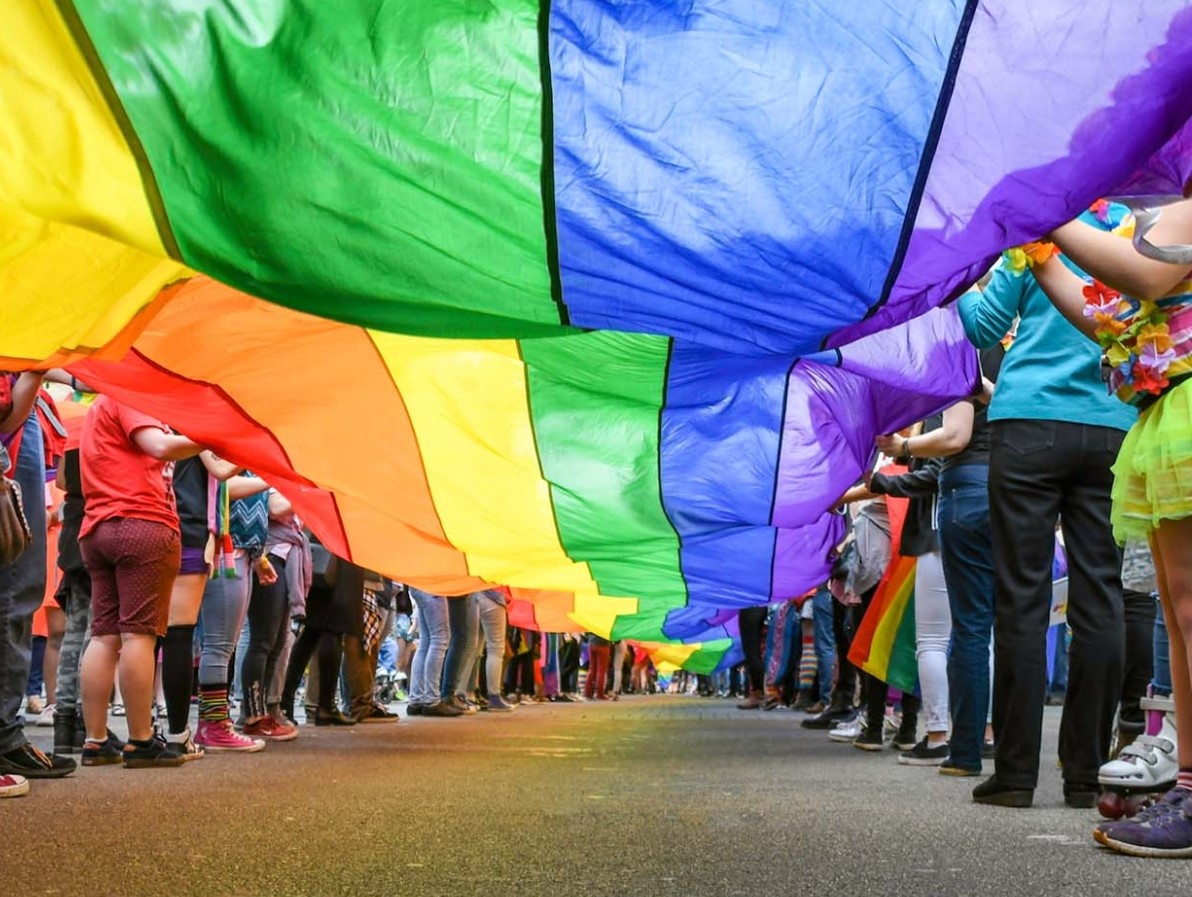He, she or they? Why gender identity and pronouns matter to all of us
Diversity & InclusionArticle23 September 2022
For many people, pronouns are an expression of gender identity. Zurich UK employees Mickey Elliott and Orion Russell explain how using appropriate pronouns is a first step towards respecting gender identity and creating a more inclusive world.
By Justin Robbins
Society still predominately recognizes two genders: man and woman. But not everyone fits comfortably into these binary categories. A growing number of people are coming out as “nonbinary” – a term for people who do not identify within the single binary gender
According to the National Center for Transgender Equality, some people have a gender that blends elements of being a man or a woman, or a gender that is totally different. Others don’t identify with any gender or their gender changes over time. It means that gender pronouns – “he/him/his” and “she/her/hers” – don’t fit either. It’s why gender-neutral pronouns, such as “they/them,” are becoming more common.
“I never felt that I fitted under the trans umbrella, and I see gender as irrelevant. I wear both men’s and women’s clothes, and I have masculine and feminine traits,” says Mickey Elliott, a Zurich UK employee who uses the pronouns she, her and they, and the title Mx (instead of Mr, Mrs or Miss). “People can use she-her or he-him pronouns and still identify as nonbinary – a ‘they’ pronoun is not a prerequisite,” she adds.

“I see gender as irrelevant.”
Mickey Elliott
Zurich UK
“’That’s not for boys’ was the response my mum would give 30 years ago when I asked for the Belle dress in the Disney Store,” says Zurich UK employee Orion Russell, who uses the pronouns they and them.
“My biggest challenge is that of toxic masculinity, including phrases such as ‘man up,’ where I am presenting as a man but don’t fit into the male stereotype,” Orion smiles, who at 188 cm (6ft 2in) is also a pole dancer and drag artist.
Both Orion and Mickey’s stories have a common theme – finding their place in a world that loves to have labels and boxes into which everyone fits neatly.
In their teenage years, Orion realized they weren’t on the same journey as many of their friends. “I suffered from gender and body dysphoria to the point where I seriously considered transitioning to be a woman. Ultimately, I didn’t go through with it, and then a few years ago I met two transgender women who were also drag queens. Watching them on their journey, feeling comfortable with themselves regardless of how the world perceived them inspired me to find my true self. I started with drag at home, with them and my partner, until eventually my drag and male identity kind of merged, leaving me somewhere in the middle,” says Orion.

“I see gender as irrelevant.”
Mickey Elliott
Zurich UK
Mickey says she is still very much on her journey as a human being. “Growing up in the 80s and 90s I was a tom boy. Section 28 legislation in the UK, introduced in 1988, made it illegal for schools to promote homosexuality. This didn’t make us less gay, it just made us more alone, unable to get the support and counseling that we needed. At the time I thought I was a lesbian and didn’t realize that gender and sexuality could be two separate issues. When I met my husband and had a baby, I was determined to allow my son to do whatever he wanted to do. Within the last few years, as conversation and language has evolved, there has suddenly appeared a description for how I feel. I have peers to talk to who understand.”
Gender vs. Sex
The terms “sex” and “gender” are often used interchangeably, but they are different concepts.
Sex is assigned at birth and refers to the biological aspects of an individual as determined by their anatomy and chromosome composition. Typically male, female or intersex.
Gender involves how a person identifies and is not made up of binary forms. Instead, gender is a broad spectrum. Gender identity is a personal, internal perception of oneself and so gender may not match with the sex assigned at birth.
Nonbinary in the workplace
Most workplaces are not yet friendly towards nonbinary people. The language used in policy documents often refers to he or she, and even workplace toilets are challenging for nonbinary people when labeled as simply male and female.
“Wouldn’t it be a great introduction to a company if a manager were to state their name and pronouns, and then ask the new employee for theirs?” questions Orion. “Any time I am ever asked my pronouns, I feel special and wanted.”
Many workplace systems can make it difficult for nonbinary people to self-identify. For instance, they may ask for “sex assigned at birth” instead of gender identity. Aside from acceptance issues, this makes it difficult for an organization to understand the true diversity of their workforce.
“On my driving license my title is ‘Mx’, but on eight out of 10 forms that’s not an option. Imagine filling in a form, where you can only select one of three first names, none of which are yours,” says Mickey.
But as awareness and acceptance increases, change slowly follows.
“I have always had understanding managers, who, when sending me a letter on behalf of my employer, have been able to make a manual intervention to correct my title,” says Mickey. They were perhaps educated by Zurich UK’s diversity and inclusion guide that includes a section on nonbinary identities.
In fact, many Zurich UK employees, following the lead of the UK leadership team, have added their pronouns to their email signature, along with a link to ‘why this is here’ – a guide that explains how sharing our gender pronouns in the workplace is “one of the cornerstones of an inclusive culture.”
“It’s not just about trans and nonbinary people sharing their pronouns, because this makes it an ‘outing.’ When people understand this, they are often happy to share their pronouns,” explains Marianne Cowie, Global Co-Chair of Zurich’s PrideZ community.
Creating greater inclusivity
Adding pronouns to your email signature or social media profiles can help normalize the sharing of gender pronouns, but how else can we be more inclusive to nonbinary people? “Firstly, don’t assume someone’s pronouns based on how they look, in the same way you wouldn’t guess someone’s name,” says Marianne.
“It can be really difficult when you are looking at someone who looks male but is wearing eye makeup and has gorgeous nails,” says Mickey. “The thing to do is just say: ‘I love your nails; how can I refer to you?’”
And don’t worry if you get it wrong, adds Mickey: “People mis-gender dogs and babies all the time! If you say the wrong thing, just apologize and move on.”
As levels of acceptance continue to grow, Orion believes more people will consider their own identity. “People who may have repressed their true self in the past, as it felt easier to do so, might feel more comfortable talking about, and even questioning their own pronouns,” they add.
What would Mickey and Orion like readers to take away from their interview and what advice would they offer to anyone who might be starting out on their nonbinary journey?
“No matter how someone presents, don’t make assumptions. It feels complicated, but just ask me who I am. We are all just human,” says Mickey.
Providing it is done with respect, it’s okay to get it wrong, they even get it wrong themselves sometimes. In the end, we all have one thing in common, no matter how we identify, or which pronouns we use – we are all just human beings on the journey of life.



